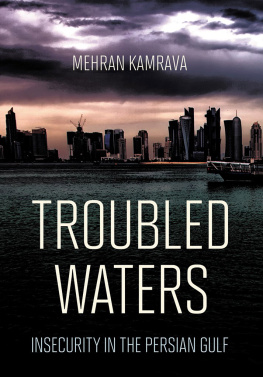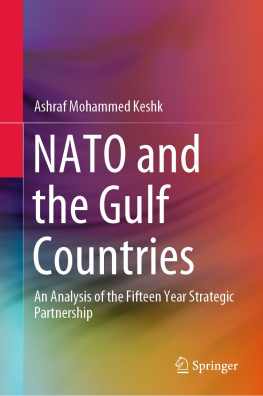Dynamics of Change in the Persian Gulf
The Persian Gulf has come to represent one of the most strategically significant waterways of the world. In terms of geography, geopolitics, resources, global political economy, and regional influence, the Gulf is perhaps home to the world's most significant group of countries. Focusing on the complexities of the interplay between domestic-level changes and region-wide interactions, this book presents the reader with the first comprehensive survey of the dynamics of change in this crucial area.
Systemic-oriented in its approach, the impact of war and revolution on the countries of the subregion is discussed, and the ways in which these factors have shaped the security dilemmas and responses of the Gulf states is also explored. The role of oil is examined in terms of the impact of its income on these states and societies, and the manner in which oil has shaped the integration of these states into the global system. Oil has shrunk developmental time in these countries, and has accelerated generational shift. At the same time, it has created the dialectical relationship which now characterizes the difficult balance between prosperity and instability which is at the heart of the subregion.
Casting a new light on the workings of a strategically significant part of the international system, this book will be an essential resource for students and scholars of international relations, international security, and Middle Eastern politics.
Anoushiravan Ehteshami is Professor of International Relations at Durham University, UK. He is Joint Director of the Research Councils UK-funded DurhamEdinburghManchester Universities national centre of excellence, the Centre for the Advanced Study of the Arab World, whose research focus since 2012 has been on the Arab World in Transition. He was the University's Dean of Internationalisation, 200911, and was the founding head of the School of Government and International Affairs at Durham University (20049). He has been a Fellow of the World Economic Forum, and has been elected as a member of the World Economic Forum's foremost body, the Global Agenda Councils. He was Vice-president and Chair of Council of the British Society for Middle Eastern Studies, 20003.
To Emma and the boys for a lifetime of happiness
Dynamics of Change in
the Persian Gulf
Political Economy, War and Revolution
Anoushiravan Ehteshami
First published 2013
by Routledge
2 Park Square, Milton Park, Abingdon, Oxon OX14 4RN
Simultaneously published in the USA and Canada
by Routledge
711 Third Avenue, New York, NY 10017
Routledge is an imprint of the Taylor & Francis Group, an informa business
2013 Anoushiravan Ehteshami
The right of Anoushiravan Ehteshami to be identified as author of this work has been asserted by him in accordance with sections 77 and 78 of the Copyright, Designs and Patents Act 1988.
All rights reserved. No part of this book may be reprinted or reproduced or utilised in any form or by any electronic, mechanical, or other means, now known or hereafter invented, including photocopying and recording, or in any information storage or retrieval system, without permission in writing from the publishers.
Trademark notice: Product or corporate names may be trademarks or registered trademarks, and are used only for identification and explanation without intent to infringe.
British Library Cataloguing in Publication Data
A catalogue record for this book is available from the British Library
Library of Congress Cataloging in Publication Data
Ehteshami, Anoushiravan.
Dynamics of change in the Persian Gulf political economy, war and revolution / Anoushiravan Ehteshami.
p. cm.
Includes bibliographical references and index.
1. Persian Gulf statesPolitics and government. I. Title.
DS247.A135E48 2013
953.05dc23
2012032773
ISBN: 978-0-415-65757-0 (hbk)
ISBN: 978-0-415-65758-7 (pbk)
ISBN: 978-0-203-06625-6 (ebk)
Typeset in Times New Roman
by Taylor & Francis Books
Contents
PART I
Power politics
PART II
Political economy
PART III
Political systems and processes
PART IV
Conflict
Tables
Preface
Let me begin this book with a personal blog: it is winter here in Durham, and autumn of 2010 has proved to be one of the coldest on record; and I have just got home from work on one of the dark cold nights of December when events on the other side of the Mediterranean herald in what became known as the Arab spring. By end of January 2011 two dictators had fallen and the Arab street was on the march all across the region. In Libya, Jordan, Yemen, Morocco, and Algeria people were stirred into direct action, and unprecedented public protests followed. Soon, the spring reached the Arabian Peninsula and the oil monarchies. In Oman, Bahrain, and Saudi Arabia, calls for a widening of public space and improved economic conditions were being raised. It is now mid-March 2011 and I am already well into writing this book, but as I begin composing my thoughts about how best to account for and demonstrate the dynamics of change in the Persian Gulf, the news breaks that 1,000 Saudi troops aboard Saudi armored personnel carriers and a further 500 police officers from the United Arab Emirates (UAE) have entered Bahrain at the invitation of the ruling establishment in order to restore peace and security in the kingdom. As they do so, King Hamad declares emergency law for a three-month period and the Bahraini security forces begin clearing protestors and their encampment from Pearl Square and other central parts of the capital, Manama. I am concerned about these latest developments for a number of reasons. First, until the previous week the ruling al-Khalifa family had been trying to reach out to the demonstrators and had been moving toward establishing a national dialogue committee to address the grievances of the population. Second, as the crisis has increasingly acquired a violent sectarian, SunniShia dimension to it, I have become very concerned that the SaudiEmirati intervention will help fuel such sectarian tensions elsewhere and escalate to encompass other countries of the Persian Gulf, most notably Saudi Arabia itself. Third, interventions of third parties of this kind, albeit under the banner of the Gulf Cooperation Council's (GCC's) Peninsula Shield Force, can only encourage Iran to follow suit and begin openly to champion Gulf Arab Shia communities in whichever country. Fourth, inflaming SunniShia tensions can only deepen the crisis of confidence in the subregion and could have grave consequences for the Persian Gulf's stability and interstate relations in the years to come. Fifth, the intervention of Gulf Arab troops in Bahrain to suppress its popular uprising is complicating the United States relations with the GCC countries and its role as their ultimate security guarantor. Sixth, I am conscious that the Saudi action, following its unilateral military interventions in Yemen in 2009 to contain the al-Houthi threat to the Kingdom, could form part of a broader strategy of imposing itself on the security structures of the oil monarchies. Seventh, such an emphatic suppression of popular protests in Bahrain and elsewhere in the Gulf and the wider Middle East has helped to take the spotlight off of the securitization of Iran and Tehran's own violent suppression of the Green Movement and reformists across the country since 2009. But also it is clear that the Arab spring has been at best a mixed blessing for Tehran. And finally, as I see Saudi troops enter Bahrain I am reminded of the complex relationship between Saudi Arabia and Iran over the future of Bahrain that first cast its shadow over the subregion in the 196875 period and in the aftermath of the British withdrawal from the Persian Gulf. The wounds opened at that time have yet not healed. And in this regard I am reminded of the durability of geopolitics as a key driver of change in the subregion, which not surprisingly forms the core of the analytical approach of this book.











